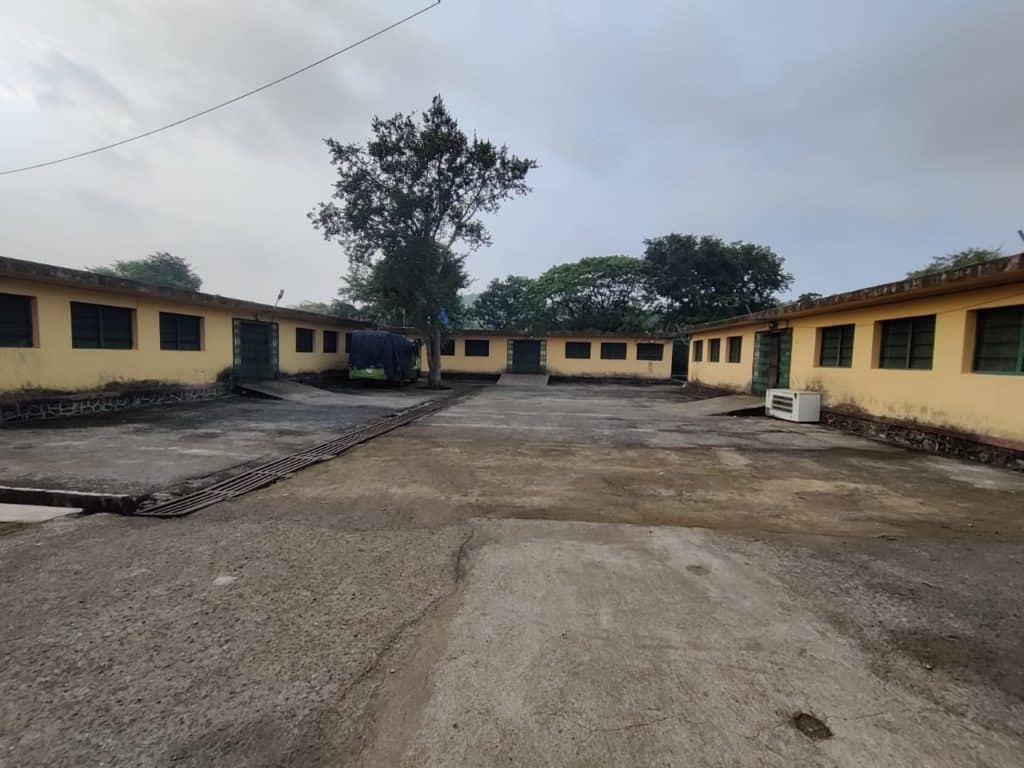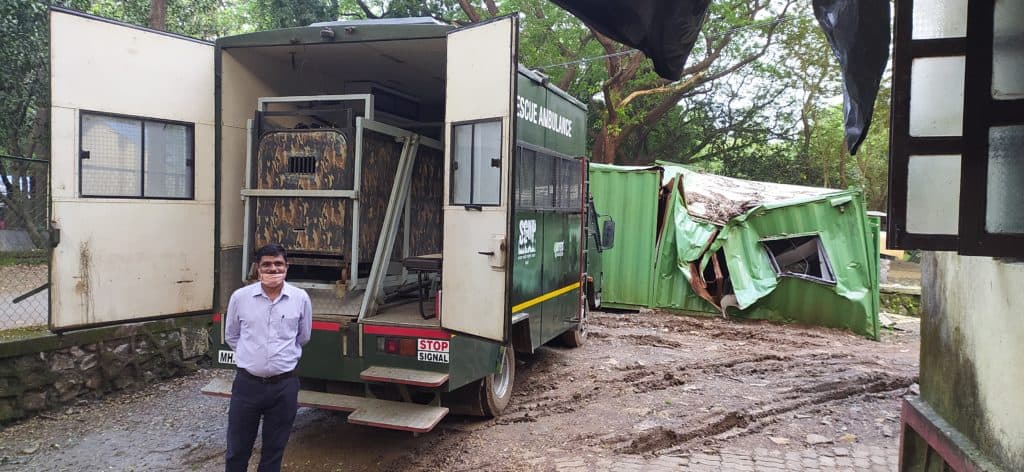A few weeks ago, we explained how India’s most populous city, Mumbai, has the highest density of leopards in the country.
Unsurprisingly, wildlife experts have called for an increase in the number of leopard rescue centers in Maharashtra. With the increase in the leopard population in the state and human habitations closing in on the green forest spaces, the conflict between humans and leopards are increasing.
Leopard rescue centers are a stop gap arrangement to deal with such conflicts.
Rescuing big cats
A leopard rescue center houses leopards that are injured, rescued or caught for attacking humans or they are cubs that are orphaned or abandoned.
It’s an orphanage-cum-rehabilitation centre-cum-jail for leopards.
Each time a leopard attack is reported, camera traps are set up nearby to help track and identify the animal. Once the cage is set up and the leopard is trapped and tranquilised, it is moved to rescue centres. Thereafter the swabs of the leopards are sent for DNA testing. And if the animal is found to be responsible for the aggression, then it is not released into the wild. Those that aren’t, are released after ensuring minimum human imprint.
There have been no reported leopard attacks on humans in Mumbai, even though their numbers increased from 35 in 2016 to 47 in 2018, as per the leopard census. However, there have been increasing instances of attacks reported from Nasik and Ratnagiri. Four people including three children were killed in leopard attacks between April- July, 2020 in seven incidents of leopard attacks at Nashik.

After the detainment of nine leopards in Nashik between July-August, the leopard attacks stopped, making authorities wonder if increasing the rescue centres is the way forward. “About 15 cages and about 40-50 camera traps were set up in about 12-kms banks of Darna river to trap the leopards,” says Ganeshrao Zole, Assistant Conservator (forest), Nashik West. Nine leopards were captured, six of them were sent to the Sanjay Gandhi National Park leopard rescue centre in Mumbai. Since then, the reports of leopard attacks from Nashik have paused.
Subsequently, Hyderabad’s Centre for Cellular and Molecular Biology (CCMB) laboratory revealed that the aggressive leopard was male, therefore three female leopards were released back into the wild safely. “Since the CCMB report doesn’t identify individual DNA pattern, we can’t pin the blame on the exact male in captivity and hence by giving benefit of doubt, all three males will have to be held back,” says Zole.

Leopards have been observed to lick their prey after making a kill. So, salivary swabs collected from human victims are tested to check the DNA of leopards. “But, since we don’t have an extensive DNA database, its difficult to pinpoint the exact leopard. However, there is the circumstantial evidence in the form of camera traps that might aid in understanding the complex issue,” says Nikit Surve, researcher, with the non-profit Wildlife Conservation Society (WCS). Once the animal is trapped and identified the decision of its release is taken by the Forest Department officials.
Currently, Maharashtra has three leopard rescue centers, one within the precincts of the SGNP, the Manikdoh Leopard Rescue Centre (MLRC) near Junnar and another in Gorewada Rescue Center, Nagpur. The capacity of MLRC was recently increased from 39 to 50 leopards.
Plans to have rescue centres in each of the 11 forest circles in Maharashtra are in the pipeline.
Holding leopards hostage
Although man-animal conflicts are increasing due to human encroachment on forest lands, the animals are trapped to avoid harm to humans. “Moreover, leopards get attracted to human habitats due to factors like easy availability of prey like stray dogs,” says Sunil Limaye, additional principal chief conservator of forests (Wildlife) of Maharashtra’s west zone.
The SGNP leopard rescue centre houses about 15 leopards now. These leopards are brought here from as far as Nashik and Ahmednagar and places surrounding Mumbai like Yeoor. They are kept in 24 enclosures, eight of which are attached with about 3000 sq secondary enclosures i.e spaces for leopards to play around equipped with balls and planks.
Abandoned or orphaned cubs of leopards cannot be released into the wild since they lack the training needed to hunt for survival in the wild. Once the attempts to reunite them with their mother leopards fail, such cubs are transferred to zoos for display.
Though rescued cubs could be ‘re-wilded’ in a controlled manner, experts say it is a complicated process. “You have to train them before leaving them in the wild and can be left only if convinced that they can take care of themselves out there. This is a huge task and with the leopard population anyways on the rise in the wild, this process has taken a backseat,” says Dr Dr Shailesh Pethe, the veterinary officer of the SGNP’s center.

Big cats in our backyard
Awareness campaigns like ‘living with leopards’ involving local citizens living on the periphery of leopard habitats, is also a key strategy in mitigating man-leopard conflicts. The forest department is also working towards training and capacity building programs for staffers of the forest department and local residents rapid response teams for dealing with emergency conflict management with leopards.
The SGNP’s six-member rescue team that specialises in trapping and rescuing leopards, is considered one of the best in the country and has also conducted training sessions for forest teams from states like Uttarakhand and Karnataka. It is equipped with two dart guns along with a rescue van loaded with a hydraulic-operated cage among other things, probably the only one of its kind. “The SGNP rescue teams also shuttled to places like Nasik and Ratnagiri during a crisis,” says Vijay Barabde, Range Forest Officer, who heads the rescue operation of the SGNP.
There are efforts to develop primary response teams among villagers staying in the periphery of leopard habitats to handle conflicts till a rescue team arrives. The basic training module covers sessions on how to respond to leopards, how to allow escape routes for leopards, safety precautions to follow etc.
In a 2015 document, a committee studying ways to avoid man-leopard conflicts had recommended that leopards caught for predatory attacks, the permanently injured leopards or hand reared cubs, should be kept in a Leopard Conflict/ Interface Management Centre.
The committee also recommended that the animals in captivity be used for display to help educate and sensitize local people, especially school children about the circumstances leading to the permanent captivity of these animals so that they empathize with the animals who are otherwise condemned for life. It also suggested that the wild animals be kept behind a one way viewing glass so that they are not aware of the humans viewing them.